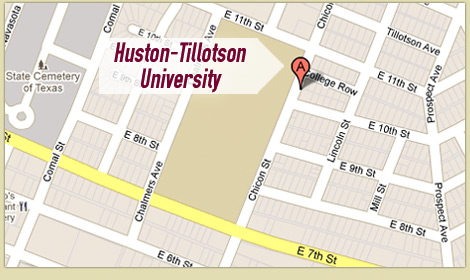
Ms. Canary Gallion
Director of Sponsored Programs/Coordinator Title III
Email: cgallion@htu.edu
Phone: 512.505.3021
Ms. Kimberly Allen
Pre-Award Specialist
Email: kallen@htu.edu
Phone: 512.505.3023
Vacant
Post-Award Specialist
Email:
Phone: 512.505.3022
Ms. Willie Ward
Grant Accounts Specialist
Email: wmward@htu.edu
Phone: 512.505.3077
ACADEMIC
CALENDAR
Budget Preparation
All direct costs charged to sponsored projects awarded to the Huston-Tillotson must be allowable, allocable, necessary and reasonable for carrying out the objectives of the sponsored project as defined in Uniform Guidance (2 CFR 200). To be consistent in managing direct costs, the University extends these requirements to both federal and nonfederal sponsors. Uniform Guidance defines direct costs:
Direct Costs (e.g. salary, fringe benefits, and materials and supplies) can be identified specifically with a particular final cost objective or can be directly assigned to such activities relatively easily with a high degree of accuracy. Costs incurred for the same purpose in like circumstances must be treated consistently as either direct or indirect (F&A) costs (200.413).
All costs charged to a sponsored project must be allowable, reasonable, and allocable (2 CFR 200 Subpart E—Cost Principles). A cost is not necessarily allowable just because it is proposed and not excluded from the award, or because it is invoiced and not excluded by the sponsor when reimbursed. Costs must meet the following criteria, and may be found unallowable even after award closeout.
Allowable: A direct cost is allowable when it is necessary for the project and meets the criteria for reasonable and allocable costs outlined here as well (200.403). An allowable direct cost must:
|
Reasonable: A direct cost is reasonable when it does not exceed that which would be incurred by a prudent person (200.404). A reasonable direct cost must:
|
Allocable: A cost is allocable to a particular award if the relative benefit of the goods or services can be assigned to that award. The cost must be incurred specifically for the award, and be charged to the award proportionally to the benefit the award received (200.405). |
Facilities & Administrative (F&A) or Indirect Costs (IDC)
Project budgets should include all costs required to accomplish the objectives in the proposal or agreement. These costs are categorized as either direct or indirect costs:
| Direct Costs (e.g. salary, fringe benefits, and materials and supplies) can be identified specifically with a particular final cost objective or can be directly assigned to such activities relatively easily with a high degree of accuracy. Costs incurred for the same purpose in like circumstances must be treated consistently as either direct or indirect (F&A) costs (200.413). | Indirect (Facilities and Administrative – F&A) Costs means those costs incurred for a common or joint purpose benefitting more than one cost objective, and not readily assignable to the cost objectives specifically benefitted. These costs include building depreciation, equipment and capital improvement, utilities, custodial services, general administration, research administration, the libraries, accounting, and purchasing. (200.414).
The University’s F&A rates are determined by an agreement with the federal government in accordance with the federal Uniform Guidance. |
In May 2020, the University negotiated its current Cost Rate Agreement.
Fringe Rates & Guidelines
The term “fringe benefits” refers to non-wage expenses paid by an employer on behalf of their employees. These expenses include insurance premium sharing, employer matching, Social Security (OASI) and Medicare, Teacher Retirement System (TRS) and Optional Retirement Program (ORP) matching, as well as assessments for Unemployment Compensation Insurance (UCI), Workers’ Compensation Insurance (WCI), vacation and sick leave.
Fringe Rates
Fringe benefits are a direct cost to a sponsored project (§200.431). They are budgeted as a percentage of the salaries and wages and shown as a separate entry in the budget. Fringe is charged on all payroll transactions processed in Workday.




